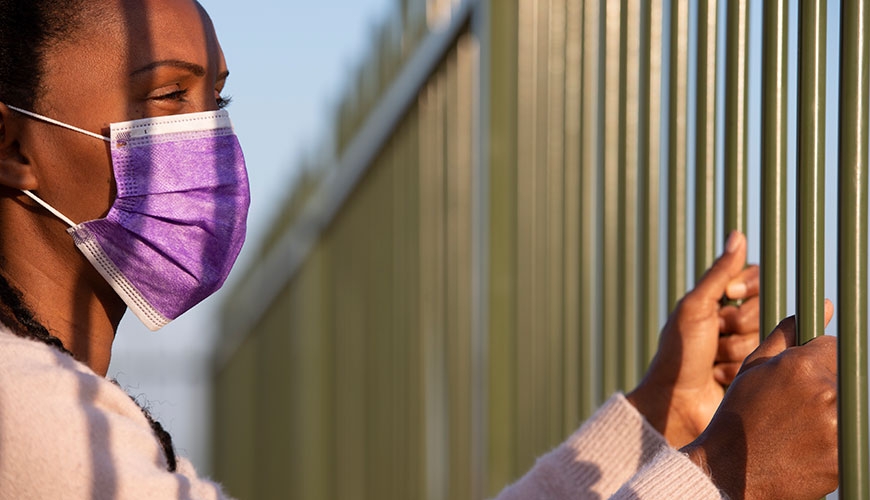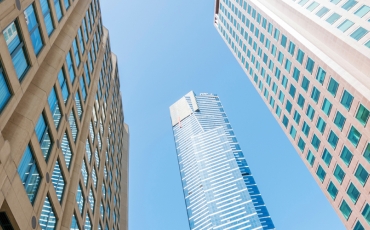Management of COVID-19 risks in immigration detention (2021)

Human Rights Commissioner’s Foreword
The COVID-19 pandemic is a serious threat for people held in Australia’s immigration detention network.
COVID-19 can spread quickly in enclosed, confined spaces such as detention. A high proportion of people in immigration detention have pre-existing health conditions—a factor that can worsen the health impact of people who contract COVID-19.
To date, no-one detained in Australia’s immigration detention facilities has tested positive to the virus, and only a small number of people working in these facilities have tested positive. We acknowledge this achievement.
This report sets out important additional steps the Government should take to improve measures to combat the risk of COVID-19 in immigration detention. It also recommends some more targeted measures to reduce the negative human rights impact on people in detention.
The pandemic poses an ongoing, serious threat. At the time of writing, many countries are struggling to contain a resurgence of COVID-19, especially following the emergence of new variants of the virus. Even jurisdictions such as Singapore and Taiwan, which have previously had considerable success in keeping case numbers low, are now taking urgent action to address a dangerous new wave of infection.
Since mid-2020, the Australian Human Rights Commission has worked to understand and assess the measures taken to combat the COVID-19 threat in immigration detention. This report contains 20 recommendations for action by the Government to reduce the risk of the virus entering and being transmitted in detention facilities, and also to reduce unnecessary or disproportionate restrictions on people in immigration detention.
On 28 May 2021, the Commission received the Department of Home Affairs’ formal response to this report’s recommendations. That response is published alongside this report. The Department agreed in full with six of the Commission’s recommendations; in part with two recommendations; while noting seven recommendations. It disagreed with five recommendations.
The Commission will work with the Government, especially to implement recommendations with which the Department agrees.
The Commission’s recommendations can be divided into three groups.
The first group relates to the size of the immigration detention population. When large numbers of people are confined in small spaces, there is a high risk of COVID-19 transmission.
Many other countries, such as the United Kingdom, Canada and the United States, responded to this risk by reducing the number of people held in closed immigration detention—by around 39%, 66% and 69% respectively. By contrast, the immigration detention population in Australia increased by nearly 12% in the six months since the COVID-19 pandemic was declared in March 2020—resulting in significant strain across the immigration detention network as facilities operate close to or at their regular capacity.
While re-opening of the North West Point detention facility at Christmas Island has provided some capacity relief, the Commission considers this is not an appropriate solution to address increasing numbers and overcrowding. The Island’s isolation and lack of sophisticated healthcare facilities would make it more difficult to respond as effectively as possible to a possible outbreak. Moreover, people detained on the island generally cannot receive face-to-face visits from family and other loved ones, and must instead rely on the limited broadband service for tele- and video-conferencing.
The Government should follow expert health advice by placing people who present a low security risk in community-based alternatives to closed detention—much as other comparable jurisdictions have done with success.
Secondly, the Commission makes a number of recommendations to improve physical distancing, which is a crucial way of reducing risk of virus transmission. In particular, some bedrooms in immigration detention facilities are too small—they do not provide for at least four square metres per person (excluding any sanitary facilities included in the bedroom) as required by expert health advice and human rights standards. In addition, most people share bedrooms that contain bunk beds with at least one or two other people—a layout that makes it impossible to keep 1.5 metres apart.
Special attention should be given to people with pre-existing health conditions. The Department of Home Affairs advised that, as at 28 September 2020, 247 people in closed immigration detention were assessed as particularly vulnerable to COVID-19. Where it is unsafe to remove those people from closed detention, at the very least they should be accommodated in single rooms with separate bathroom facilities.
Thirdly, measures that restrict an individual’s basic rights—such as freedom of movement—must be reasonable, necessary and proportionate to addressing COVID-19 risks. The buildings used for quarantine inside immigration detention tend to be harsh and prison like, with no or very limited access to outdoor areas. The Government should improve the physical conditions and amenities, and access to support for the duration of a person’s quarantine.
Quarantine should be used only where medically necessary, taking into account risk that the relevant individual has been exposed to COVID-19 and the level of transmission in the community. The Commission is concerned that the use of ‘operational quarantine’— for example, where a person is quarantined for 14 days, regardless of symptoms, after an offsite appointment—may not be sufficiently targeted to ensure it is used only when necessary.
As the Australian Government expands its vaccine roll out over the course of 2021, it has indicated the vaccine will be available to everyone in Australia, including those in detention. The Commission commends this approach, and urges that people in immigration detention, and others who work in these facilities, be given priority in being offered COVID-19 vaccination.
Edward Santow
Human Rights Commissioner
June 2021
Department of Home Affairs response


